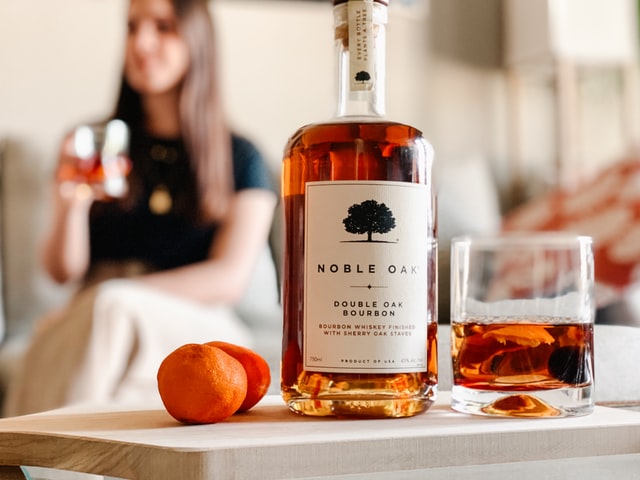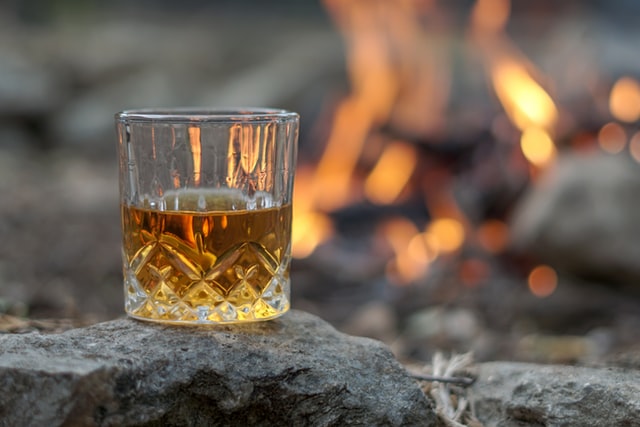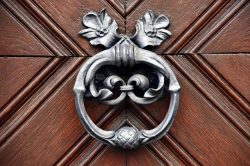Bourbon is synonymous with the United States, westerns, and American cinema icons, which have more than once been used to promote this alcohol. Writing more detail, bourbon is an alcohol made from corn, wheat, malted barley or rye, yeast, and water. Unlike Scotch whisky, it is aged in new oak barrels, usually made of American oak. The corn content of at least 51% and the new barrels give the bourbon its characteristic sweet and caramel flavour. Bourbon is produced by many regions, although Kentucky is the mecca for any lover of this alcohol.
Contents
In short, bourbon is a type of American whiskey. Of course, Scotch whisky and Irish whiskey have many features in common. This is due to the simple fact that whisk(e)y came to the US with emigrants from the British Isles. Then, over time, the Yanks began to produce "their" whiskey.
Thus, bourbon was born. Unfortunately, the story of the recipe's origin has not been written down anywhere, just like where the name bourbon came from. So we rely only on conjecture and legends.
Delving into the history of American bourbons, one comes across information that the father of this drink is a sure Elijah Craig. He was a Protestant clergyman who, around 1789, established a distillery in Kentucky, where he was the first to produce bourbon. He is also credited with the first use of fired barrels for ageing the distillate.
Bourbon or whiskey

However, historians strongly doubt the veracity of this legend. Moreover, the case is similar to Mr Jacob Spears, who allegedly was the first to use the name bourbon (or, in Polish, simply bourbon). And while we're on the subject of names, this issue is also unclear. While there is some agreement that it references the French Bourbon dynasty, the question is, why the coincidence? There are two theories.
The first assumes that the name came from a county located in Kentucky, where many distilleries were located. Distillers, wanting to distinguish themselves from other spirits produced in the area, introduced the name bourbon to describe one type of liquor.
Another theory is that it took its name from a street in New Orleans, where the liquor trade flourished in the port. All in all, neither of these theories has been confirmed or ruled out.
What is bourbon

The bourbon recipe can be found in American legislation. According to the legal definition, it is a product that meets the following conditions:
- the alcohol is made from a mixture of grains, of which at least 51% is corn,
- the distillate after distillation contains no more than 80% alcohol ("in American" 160 proof),
- at the time of filling the barrels, the alcohol content does not exceed 62.5% ("in American" 125 proof)
- the barrels are exclusively new, oak, fired
- the product goes into bottles with a minimum of 40% alcohol content ("in American" 80 proof)
Even after 4 months of ageing, we are dealing with bourbon. There are no requirements for the number of years the bourbon must spend in barrels. On the other hand, to call a Straight product bourbon, the distillate must mature in barrels for a minimum of 2 years.
How to make bourbon

Making bourbon is very similar to making whiskey.
The first stage is mashing cereal grains (a minimum of 51% corn, in practice, often about 70%). Then such a mixture is poured with water, boiled, and prepared for the next stage, fermentation, which usually takes 3-4 days. The liquid thus created is then distilled. The last stage is maturation, which takes place in oak barrels.
Only Tennessee Whiskey is clarified by pouring the distillate through a thick layer of maple charcoal before pouring it into barrels. This method is called the Lincoln County Process, and we can experience its effect when drinking Jack Daniel's, for example.
After ageing in barrels, the alcohol is bottled, after which there is nothing left to do but empty the bottle in front of the TV or at some party.
How to choose the best bourbon

Voltage
Producers dilute the distillate with water to get the right alcohol strength. Bourbon is usually around 40% (although there are some lighter ones), but there are also rarities at 53% and 75%. Look for at least "86 proof" because bourbon is supposed to be bourbon, not a compote at Aunt Jadzia's.
Neck
Forget about bottles with a narrow waist at the neck. It's industrially manufactured so that the flask slides into the rails in American bars. And the bartender can quickly slide it out and use it as one of the ingredients in drinks. Fine bourbons are thick there.
Age
Bourbon is aged in barrels, so it acquires its unique flavour and aroma. Notes of vanilla and caramel are especially prized. The older the bourbon, the darker it gets (chardonnay behaves similarly, by the way). Look for between 6 and 10 years old.
Single Barrel
Labels have their rights - you know, marketing. You'll find both "handcrafted" and "real mash," which goes for most whiskey. Rather, look for "single barrel" because the bourbon was made and bottled in one place, without admixtures.
Types of bourbon

SWEET
The sweetest are those variants that use mostly wheat in addition to corn. These bourbons will be mild in taste, and I recommend them to those new to bourbons or whiskey in general. A classic example of such a bourbon is Maker's Mark. It is very delicate in flavour and is perfect for drinks. What I personally still like about it is that each bottle is hand-poured with lacquer. I know, I know, it's the details. I love the details :)
RYE
Bourbons in which rye is used instead of wheat are much more pronounced in taste. You can detect spice notes in them - pepper, nutmeg, or cinnamon. If you like more pronounced flavours, or if you're a gourmet scotch drinker and think bourbons are too sweet for you - try at least Knob Creek Rye. It has very cool dry notes - you'll find that it's the one I like to make Old Fashioned on, which is my favourite whiskey-based drink. It is then neither too sweet nor too dry. But I'll write about drinks some other time.
CLASSIC
Classic bourbons, as you may have guessed, are in the middle. That is, they balance sweetness and dryness. These include perhaps the most famous Jim Beam with its distinctive white label. Produced according to a single recipe for more than 200 years. And if you want something special - if only for a very exquisite gift - buy the 12-year-old Jim Beam Signature Craft. No, this one definitely doesn't mix with cola :)
FOR THE HARDY
And if you're in the mood for something truly remarkable in its strength and flavour - try Bookers. It's a bourbon that has... 63-65% alcohol. IS POWER. It was created by Jim Beam's grandson Booker Noe. In the beginning, he bottled whiskey straight from the barrels for his own use. Then for friends. And then it turned out that people loved this variant so much that it went into permanent production.
65%. Seriously, you can feel it with every sip. And although such robust whiskies are usually drunk with the addition of water, Americans say to drink them solo and enjoy every sip.




